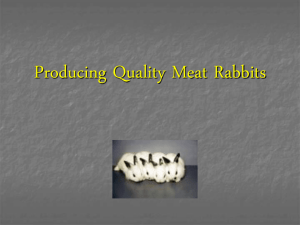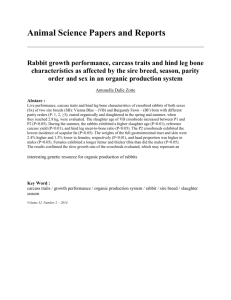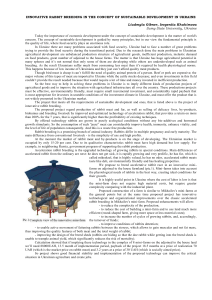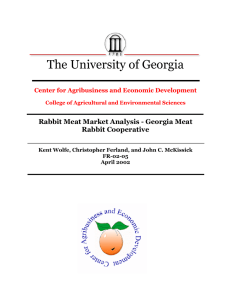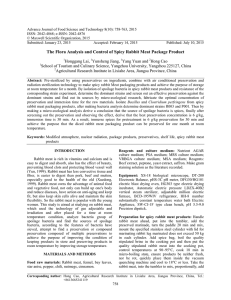Aspects of comparative rabbit meat hygiene
advertisement
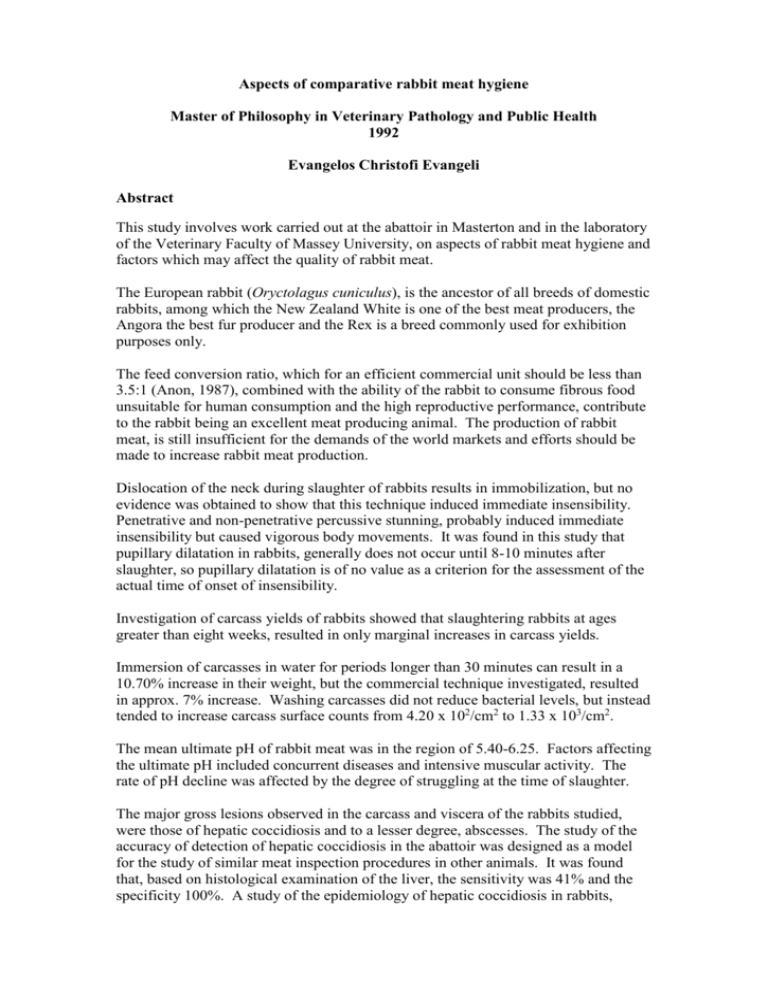
Aspects of comparative rabbit meat hygiene Master of Philosophy in Veterinary Pathology and Public Health 1992 Evangelos Christofi Evangeli Abstract This study involves work carried out at the abattoir in Masterton and in the laboratory of the Veterinary Faculty of Massey University, on aspects of rabbit meat hygiene and factors which may affect the quality of rabbit meat. The European rabbit (Oryctolagus cuniculus), is the ancestor of all breeds of domestic rabbits, among which the New Zealand White is one of the best meat producers, the Angora the best fur producer and the Rex is a breed commonly used for exhibition purposes only. The feed conversion ratio, which for an efficient commercial unit should be less than 3.5:1 (Anon, 1987), combined with the ability of the rabbit to consume fibrous food unsuitable for human consumption and the high reproductive performance, contribute to the rabbit being an excellent meat producing animal. The production of rabbit meat, is still insufficient for the demands of the world markets and efforts should be made to increase rabbit meat production. Dislocation of the neck during slaughter of rabbits results in immobilization, but no evidence was obtained to show that this technique induced immediate insensibility. Penetrative and non-penetrative percussive stunning, probably induced immediate insensibility but caused vigorous body movements. It was found in this study that pupillary dilatation in rabbits, generally does not occur until 8-10 minutes after slaughter, so pupillary dilatation is of no value as a criterion for the assessment of the actual time of onset of insensibility. Investigation of carcass yields of rabbits showed that slaughtering rabbits at ages greater than eight weeks, resulted in only marginal increases in carcass yields. Immersion of carcasses in water for periods longer than 30 minutes can result in a 10.70% increase in their weight, but the commercial technique investigated, resulted in approx. 7% increase. Washing carcasses did not reduce bacterial levels, but instead tended to increase carcass surface counts from 4.20 x 102/cm2 to 1.33 x 103/cm2. The mean ultimate pH of rabbit meat was in the region of 5.40-6.25. Factors affecting the ultimate pH included concurrent diseases and intensive muscular activity. The rate of pH decline was affected by the degree of struggling at the time of slaughter. The major gross lesions observed in the carcass and viscera of the rabbits studied, were those of hepatic coccidiosis and to a lesser degree, abscesses. The study of the accuracy of detection of hepatic coccidiosis in the abattoir was designed as a model for the study of similar meat inspection procedures in other animals. It was found that, based on histological examination of the liver, the sensitivity was 41% and the specificity 100%. A study of the epidemiology of hepatic coccidiosis in rabbits, revealed that under New Zealand conditions, it is unlikely that any farm is free of infection with Eimeria stiedae. However, if infections are of low intensity, rabbits may not develop macroscopic hepatic lesions. It also appears that histological lesions of the liver (biliary proliferation, fibrosis, cellular infiltration of the bile ducts with inflammatory cells, including eosinophils and lymphocytes) are pathognomonic for detecting past or present infection by E. stiedae.

